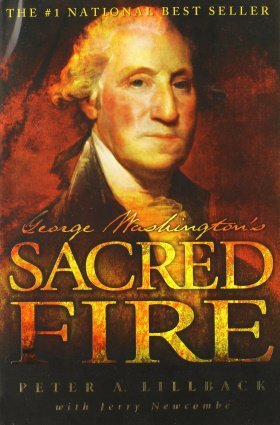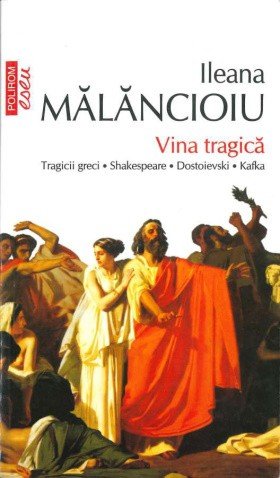141 Ibid., vol.13, 12-18-1778. To Benjamin Harrison
142 Ibid., vol. 11, 5-2-1778. General Orders.
143 Ibid., vol. 5, 5-15-1776. General Orders.
144 Ibid., vol. 30, 7-20-1785. To Jonathan Trumbull.
145 Ibid., vol. 30, 4-30-1789. The First Inaugural Address.
146 Ibid., vol. 35, 9-19-1796. Farewell Address.
147 A Discourse, Delivered, On the 18th day of December 1777, the Day of Public Thanksgiving Appointed by the Honourable Continental Congress, By the Reverend Israel Evans, Available on the Evans Collection Early American Imprints, 1st series, no. 15791 (filmed), “A.M. Chaplain to General Poor’s Brigade And now published at the Request of the General and Officers of the said Brigade, To be distributed among the Soldiers, Gratis. Lancaster: Printed by Francis Bailey 1778. Evans wrote, “Methinks I see the illustrious Washington, with but two or three thousand men, retreating indeed before 10 or 12,000 of the enemy; but yet checking their progress thro’ the country, and when reinforced by the brave militia, turning upon the enemy, killing some, captivating many, and obliging so large an army to retire, and confine themselves, during the whole winter, within narrow bounds. Oh America, give glory to God, for such a faithful hero! Then you saw him greatest when most without your aid. Collected in himself, he greatly resolved, with his few faithful followers, to be the barrier of liberty, or fall in its defense. Oh sons of America, let it not again be said, that you seemed to desert liberty and Washington: But God supported and preserved him and us all; so that instead of being conquered, we gained strength and knowledge, in the art and means of defense, during the two last campaigns: And having now nearly concluded the third campaign, although victory has not fully attended us in every enterprise, the prospect is glorious, and far exceeds our former expectations or hopes, and calls us to praise God, and say, blessed be the Lord, who hath not given us to be a prey to our enemies.... I now enter upon a less joyful subject than the triumphs of victory; but it is to some the sure attendant of conquest. Suffer me, my dear fellow soldiers, to check, for a moment, the current of joy and gladness, and blame me not for doing honour to the memory of the brave heroes, who fell in battle, honourably defending their country. They well deserve the tribute of a tear, and are justly entitled to the honour of being recorded in our breasts, among the saviors of our country. For us and posterity they bravely fought, and bled, and died, and fell in the field of glory, and the arms of victory. With us they were acquainted, and to us they were dear. Neither officers nor soldiers shall be ungratefully forgotten by us; for they have done honour to their country, and made a generous sacrifice of their lives, to the rights and liberties of mankind. Such bravery is worthy of imitation, and gives a dignity to human nature. Follow therefore, ye men of war, their noble example, and to all your innate bravery, join love to all the friends of liberty, and true love to God, who covered your heads in the day of battle, and shielded you from death, when you saw his arrows fly so thick around you, and so many were slain. I beseech you, let not your near escape from death, harden you against God, and dispose you to forget and neglect him. He is continually doing you good; why will you offend him, and disregard the innumerable obligations, you are under, to be obedient to his laws and submissive to his will. Behold, how tenderly the Psalmist represents the care and kindness of the Lord, unto all those who put their trust in him. He shall cover thee with his feathers, and under his wings shalt thou trust. Thou shalt not be afraid for the terror by night; nor the arrow that flyeth by day. In the strength of God, therefore, go on ye heroes, who, in two battles with the enemy, bravely fought, and have survived those conflicts, and are happily before me this day, employed in the most reasonable and dignified service, of praising and adoring the Lord of hosts, the God of battle, who with infinite ease disposes all the events of war, and guides the seemingly casual revolutions of kingdoms and states, to his own appointed purposes. Walk in the road of glory, and the pleasant path of true virtue, and gather fresh laurels in every enterprise. Regret not your removal from the late successful command of the honourable General Gates, for here is His Excellency General Washington. Look on him, and catch the genuine patriot fire of liberty and independence. Look on him, and learn to forget your own ease and comfort; like him resign the charms of domestic life, when the genius of America bids you grow great in her service, and liberty calls you to protect her. Look on your worthy general, and claim the happiness and honour of saying, he is ours. Like him love virtue, and like him, reverence the name of the great Jehovah. Be mindful of that public declaration which he has made. “That we cannot reasonably expect the blessing of God upon our arms, if we continue to prophane his holy name. Learn of him to endure watchings, cold and hardships, for you have just heard that he assures you, he is ready and willing, to endure whatever inconveniences and hardships may attend this winter. Are any of you startled at the prospect of hard winter quarters? Think of liberty and Washington, and your hardships will be forgotten and banished. Let Europe, nay let the world hear, that the American army, in the defense of their country, cheerfully submitted to the inconvenience of having no other houses of accommodation, than such as their own hands reared in the depth of winter. Be encouraged, therefore, to undertake all that has been proposed to you, in the generals orders. And let me assure you, from some little experience obtained, in three campaigns, that what has appeared hard and impractible, at a distance, has been found tolerable and easy, when the worst that could be imagined has arrived.”
148 WGW, vol.11, 3-13-1778. To Israel Evans.
149 WGW, vol. 30, 8-28-1788.
150 WGW, vol. 11, 3-13-1778. To Israel Evans. Valley Forge, March 13, 1778, “Your favor of the 17th. Ulto., inclosing the discourse which you delivered on the 18th. of December; the day set a part for a general thanksgiving; to Genl. Poors Brigade, never came to my hands till yesterday.
“I have read this performance with equal attention and pleasure, and at the same time that I admire, and feel the force of the reasoning which you have displayed through the whole, it is more especially incumbent upon me to thank you for the honorable, but partial mention you have made of my character; and to assure you, that it will ever be the first wish of my heart to aid your pious endeavours to inculcate a due sense of the dependance we ought to place in that all wise and powerful Being on whom alone our success depends.”
151 See, for example, The American Heritage Dictionary, (Boston: Houghton Mifflin, 1982), p. 390 under “devout”.
152 WGW, vol. 7, 4-12-1777
153 WGW, vol. 7, 4-15-1777.
154 WGW, vol. 36 7-13-1798, To THE PRESIDENT OF THE UNITED STATES
“Satisfied therefore, that you have sincerely wished and endeavoured to avert war, and exhausted to the last drop, the cup of reconciliation, we can with pure hearts appeal to Heaven for the justice of our cause, and may confidently trust the final result to that kind Providence who has heretofore, and so often, signally favoured the People of these United States.”
155 WGW, vol. 30, 9-22-1788., To HENRY LEE
“Should the contingency you suggest take place, and (for argument sake alone let me say it) should my unfeigned reluctance to accept the office be overcome by a deference for the reasons and opinions of my friends; might I not, after the Declarations I have made (and Heaven knows they were made in the sincerity of my heart) in the judgment of the impartial World and of Posterity, be chargeable with levity and inconsistency; if not with rashness and ambition? “While doing what my conscience informed me was right, as it respected my God, my Country and myself, I could despise all the party clamor and unjust censure, which must be expected from some.”
156 WGW, vol.1, 5-29-1754. To ROBERT DINWIDDIE.
157 WGW, vol. 30, 12-4-1788. To Arthur Young.
158 WGW, vol. 24, 4-20-1782. To BARTHOLOMEW DANDRIDGE
“In a word, I see so many perplexing and intricate matters before me, which must be the work of time to arrange and bring to a conclusion, that It would be injurious to the Children, and madness in me, to undertake as a principle a trust which I could not discharge. Such aid however, as it ever may be with me to give to the Children, especially the boy, I will afford with all my heart, and with all my Soul, and on the assurances of it you may rely.”
159 WGW, vol. 25, 12-14-1782. To COMTE DE ROCHAMBEAU
“To this testimony of your Public character I should be wanting to the feelings of my heart, was I not to add expressions of the happiness I have enjoyed in your private friendship. The remembrance of which, will be one of the most pleasing Circumstances of my life.”
160 WGW, vol. 34, 12-16-1795. To THE CITIZENS OF FREDERICK COUNTY, VIRGINIA
“Next to the approbation of my own mind, arising from a consciousness of having uniformly, diligently and sincerely aimed, by doing my duty, to promote the true interests of my country, the approbation of my fellow citizens is dear to my heart. In a free country, such approbation should be a citizen’s best reward; and so it would be, if Truth and Candour were always to estimate the conduct of public men. But the reverse is so often the case, that he who, wishing to serve his country, is not influenced by higher motives, runs the risk of being miserably disappointed. Under such discouragements, the good citizen will look beyond the applauses and reproaches of men, and persevering in his duty, stand firm in conscious rectitude, and in the hope of [an] approving Heaven.”
161 Ibid., vol. 16, 7-29-1779. To PRESIDENT JOSEPH REED
“..the first wish of my Soul is to return to that peaceful retirement, and domestick ease and happiness from whence I came.”
Ibid., vol. 30, 1-10-1789. To SAMUEL HANSON
“The first wish of my Soul is to spend the evening of my days in the lot of a private citizen on my farm....”
Ibid., vol. 24, 6-15-1782. To ARCHIBALD CARY
“I can truly say that the first wish of my Soul is to return speedily into the bosom of that Country which gave me birth and in the sweet enjoyment of domestic pleasures and the Company of a few friends to end my days in quiet when I shall be called from this Stage.”
162 Ibid., vol. 19, 10-17-1777. To RICHARD HENRY LEE “You may believe me, my good Sir, that I have no Earthly views, but the public good, in what I have said. I have no prejudice against General Conway, nor desire to serve any other Brigadier, further than I think the cause will be benefitted by it; to bring which to a speedy and happy conclusion, is the most fervent wish of my Soul”
Ibid., vol. 26, 4-4-1783. To THEODORICK BLAND
“As it is the first wish of my Soul to see the war happily and speedily terminated, and those who are now in Arms return to Citizenship with good dispositions, I think it a duty which I owe to candor and to friendship to point you to such things, as will have a tendency to harmony and to bring them to pass.”
Ibid., vol. 13, 12-12-1778. To PRESIDENT JOSEPH REED
“Were I to give into private conveniency and amusement, I should not be able to resist the invitation of my friends to make Phila. (instead of a squeezed up room or two) my quarters for the Winter; but the affairs of the army require my constant attention and presence, and circumstanced as matters are at this time, calls for some degree of care and address to keep it from crumbling. As Peace and retirement are my ultimate aim, and the most pleasing and flattering hope of my Soul, every thing advansive of this end, contributes to my satisfaction, however difficult and inconvenient in the attainment; and will reconcile any place and all circumstances to my feelings whilst I continue in Service.”
163 Ibid., vol. 29, 2-25-1787. To HENRY KNOX,
“...to see this Country happy whilst I am gliding down the stream of life in tranquil retirement is so much the wish of my Soul, that nothing on this side Elysium can be placed in competition with it.”
164 Ibid., vol. 36, 8-4-1797. To LAWRENCE LEWIS

























